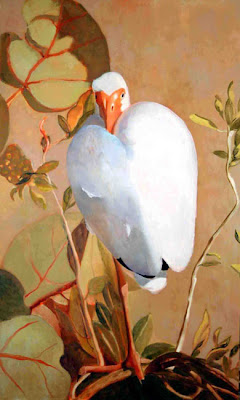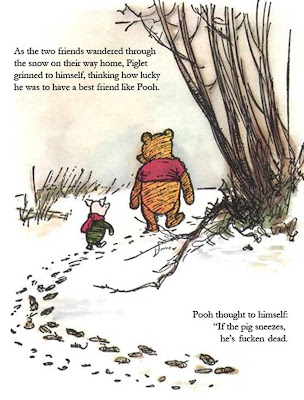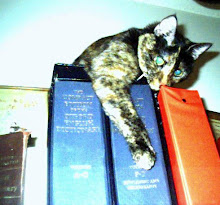Swine flu appears to have been abandoned by the breathless, ADD mainstream press for other, more earth-shaking news about head-butting and mustard preferences. But the fact that a mutated strain of swine flu, derived from swine, bird, and human variants, for which there are no vaccines -- this is still extremely important to our long-term well-being. Even if fears that this is a shadow influenza, portending a much worse outbreak next fall and winter, turn out not to be the case.
Influenza is known for its proclivity to mutate, and for its pandemic potential when it does so. Science is doing it best to stay on top of this, and as we remove the flat-earthers in our government, we can leave that aspect of this problem to science -- as is so eloquently explained by our own Evan Robinson in I Heard The Flu's Today. Oh Boy, part of his stellar series keeping us up-to-date on the real story.
What is available to us, as responsible citizens, is action on (a) making sure proactive health care is available to all who need it and (b) eliminating conditions which aggravate or actively foster the proclivity of influenza (and other organisms) to mutate in deadly ways. Both of these courses of action will mean major societal change. As the smart and honest responders to my post Making Links pointed out, those who live in urban areas on limited income -- possibly a majority of Americans now -- have little choice about where they can obtain their food.
I know. Still, every small action helps. It's going to be an extended process, anyhow, the changes we are facing. Urban environments like we experience now will have to radically alter for us to live in a sustainable manner. Hopefully, the conversations we engage in with one another will help us sort through emotion (especially the hopelessness that classism pushes onto all of us) and enable us to exercise leadership where we can.
Sue Sturgis writing for Facing South, the online magazine of the Institute for Southern Studies, this week published a sterling piece of journalism: Swine flu genes traced to North Carolina factory farm. It's a long and compelling read, but I'll excerpt the beginning here for you:'Writing about swine flu last week, we observed that massive hog farms like those clustered near the outbreak's epicenter in the Mexican state of Veracruz "can act as a vector for environmental injustice," and pointed to studies done in North Carolina -- the nation's second-biggest producer of hogs after Iowa -- that found such farms put nearby residents at risk of serious health problems and tend to be concentrated in communities with high poverty rates and a high percentage of racial minorities.
'As it turns out, there's a more direct connection between the current swine flu outbreak and North Carolina: Scientists working to understand the genetic makeup of the H1N1 virus that causes the disease have linked it to a virus behind a 1998 swine flu outbreak at an industrial hog farm in Sampson County, North Carolina's leading hog producer.'
Read the whole thing as an act of education and preparation. As Tristero concludes in one of his many excellent posts at Hullaballoo on the swine flu, it is "cause to investigate carefully and thoroughly how and where this virus originated and evolved."
(Hat-tip to Mike Finnegan doing Mike's Blog Roundup for Crooks and Liars, who brought us the link to the Facing South story. Also, hugs to Beandog for sending me the graphic used in this post.)
[Cross-posted at Group News Blog.]
Saturday, May 9, 2009
IT AIN'T OVER TIL THE PIGS STOP SNEEZING
Posted by
Maggie Jochild
at
2:19 AM
0
comments
![]()
Labels: clean food, environmentally-caused illness, Facing South, factory farming, pollution-induced mutation, Sue Sturgis, Swine Flu
Friday, May 8, 2009
FRESH FOOD, OLD MEMORIES
 (Savoy cabbage from Boggy Creek Farm.)
(Savoy cabbage from Boggy Creek Farm.)
Right after I wrote a post six weeks ago about what a great grocery delivery person I had, she let me know she was having to give up her personal assistant business in order to return to full-time (salaried) social work, because of the economy. She recommended a replacement who has turned out to be not nearly as good. I got a second delivery from the new person yesterday, and despite addressing with her the errors she made the first time around, well, she made some of the same mistakes.
Sigh.
So I have to write her another e-mail tonight, or call her tomorrow, and complain again. Point out that when she doesn't bring me a dozen eggs, for instance, it means I go without eggs for a month. My list has no room for deletions, it's as much as I can afford AND it's all the food I'll have for that month, so every item is essential to my meal-planning.
The good news is that I have someone at all (she's young, she's got a kid, I'm pretty sure she's on food stamps herself, I'm hoping she doesn't give up on me). Also good is that in the fridge right now are some fresh veggies, milk, cheese, and other items that do not last a month. The next week will be decent eating.
Also good news is that the act of carrying in and putting away the groceries did not trip any joint or muscular problems. I was extremely cautious, and I'm so proud of myself for having pulled this off that I can't stop grinning. Major victory in the world of criptitude.
Which does not mean that if I was now in my usual post-exertion pain, it would be my FAULT. No, things happen. I will accept credit for whatever role I play in navigating these waters but no blame for when I do my best and it does not work. The last thing disabled people need to hear is that we have brought it on ourselves, have failed. Again.
Last weekend, I had a scare because it felt as if I was going into an ovarian cyst rupture. My right ovary began to smolder (which is a very accurate description of the feeling). I immediately went and lay down in the only position which helps, and then only sometimes. I remained prone, drinking only water, for the next 24 hours. Watched a lot of cooking shows and got fairly hungry before the vigil was over, but again, it worked. After another day, the residual pain disappeared and the rupture never completed itself, nor did I get a fever (although I did have the usual diarrhea, which I think is from the heat in the region.)
Another factor which may be helping is that I began taking Aleve in the last four days. I've been out of Celebrex for months and there's no time visible on the horizon when I'll be able to get in to the doctor and get a new prescription, even if I could pay for the scrip, so I've been without analgesics except an occasional ibuprofen for quite a while. I'm wary about the naproxen, especially with my new GI issues, but so far, so good. My sleep is immensely better, and I'm standing with less effort, which means I'm willing to move around more, which is all positive. I'll take a holiday from the Aleve after seven days, to not overstress my gut, and see what a difference it makes when I don't have it in my system.
Speaking of ovarian cyst rupture: One of the blogs I read daily is a small jewel written by Blue Ox, a friend of mine who used to live here but has now moved to Kentucky. Today's post is gorgeous, about trying to follow up on her last ovarian cyst rupture, dealing with poverty, no insurance, being a dyke, contending with having been crazy, in a world which values none of those states of being. I recommend it highly: On Scary Ovary Monsters, Revolving Pee-Cup Doors and Finally My Own Sweet Rukan
This is photo of Blue not long after I had my knee replaced in 2000. I was off work and would walker, with great difficulty, out to my van every day and drive to Hornsby Bend, a series of treatment ponds which are great for bird-watching. I could drive the deserted road around the ponds, sit in my vehicle and use my binox to see what migratory visitors were on the water that day. Blue went with me this day and on the approach road, we saw a largish snapping turtle sitting dangerously in the middle of the asphalt. Blue took a bucket from the back of my van and scooped up the turtle, depositing her safely in the grass on the other side, while I snapped her picture.
I was at Hornsby Bend on June 19, 2001 at the time my little brother Bill died. On the first pond was a large flock of wading birds I had never seen before (or since). I sat for half an hour with my field glasses and Sibley's, trying to identify them -- not big enough to be wood storks but too large to be curlews. Finally I narrowed it down to white ibis, although we are a little out of their range here. However, Hornsby Bend is on the Colorado River and an ancient flyway. There were a few dozen of them, and their appearance unsettled me in ways I could not understand.
Not long after I got home, my father called me from Bill's house, saying Bill was dead on the couch, already cold.
White ibises are admired and heeded along the Gulf Coast because they are the last sign of wildlife to take shelter before a hurricane hits and the first to reappear once the storm has passed. They were the ancient Egyptian symbol used for Thoth, the god of wisdom, the moon, and the invention of writing. I do believe the ibises I saw that day were an omen, of the storm about to hit but also the aftermath.
Bill's yartzeit is when I began writing my novel Ginny Bates, after a dream in which he crashed the action, demanding I follow him to a trunk behind a chair. Inside the trunk were three massive reams of bound paper. He picked up one and handed it to me wordlessly, his rattlesnake-bite-disfigured hand showing its scar and twisted fingers. When I read the top page, I realized it was a book by me.
The next day, I listened to a Youtube video whose soundtrack was a song from the Solomon Islands. The music haunted me and entered not just every dream but began playing in my head all day long. That night, I had another dream with Bill in it, an outdoor party, and Ginny Bates showed up for the first time as that song was playing. A week later, I gave up trying to fight the haunting and began writing the novel. The day after that, I discovered the song's lyrics (in a language I swear I've never heard) were about an older sister telling her little brother about the nature of death.
I just realized I've never told anyone about the ibises before.  (White ibis, oil on canvas by Judith Vivell.)
(White ibis, oil on canvas by Judith Vivell.)
[Cross-posted at Group News Blog.]
Posted by
Maggie Jochild
at
4:54 AM
2
comments
![]()
Labels: Blue Ox Blog, daily journal, disability, memoir, white ibis
Tuesday, May 5, 2009
LOLCATS WEEKLY ROUND-UP, 5 MAY 2009
Here's the weekly best of what I've gleaned from I Can Has Cheezburger efforts. There are some really creative folks out there. As usual, those from little gator lead the pack.















Posted by
Maggie Jochild
at
12:05 AM
0
comments
![]()
Labels: LOLCats
Monday, May 4, 2009
WOMEN AMONG US: BETH BRANT
.+NYC.+(1990)+photo+by+Robert+Giard.jpg) (Beth Brant/Dagonwadonti, New York City, 1990; photo by Robert Giard)
(Beth Brant/Dagonwadonti, New York City, 1990; photo by Robert Giard)
I read that there are 15 statues of women in the U.S. Capitol Building, and none of them are of Hispanics or Asian women. One African-American (Sojourner Truth), soon to be joined by Rosa Parks.
Yet whose labor actually built this nation, all the nations on this continent? Who gave birth to every American who has ever lived? So many First Nations tribes are matrilineal and/or exist far outside European notions of gender, and their ways of organizing human society are (I believe) the biggest influence on why America pursued liberty in such a radically different way. This invisibility is no accident, and must be reversed if we are to survive with a soul in place.
So, once a week, I'll be posting the name of a woman whose writing and thinking have been extremely important to me and my sisters, but who has remained unseen (or poorly seen) by the dominant heteropatriarchy. I invite you to go read them, listen to them, let them work their change on you.
Beth Brant, also known as Dagonwadonti, was born to a white (Scot-Irish) mother and a father whose lineage is Bay of Quinte Mohawk from the Tyendinaga Mohawk Reservation in Ontario, Canada. She began writing in 1981, when she was forty years old and had come out as a lesbian. She was immediately published and recognized as a major voice, especially by the women's community. Her accomplishments have been attained despite being raised working-class on a Native reservation and having dropped out of school at age 17 to get married.
QUOTES FROM BETH BRANT:
"When I use the enemy's language to hold onto my strength as a Mohawk lesbian writer, I use it as my own instrument of power in this long, long battle against racism." (from her essay "From The Inside Looking At You" in Writing as Witness: Essay and Talk)
"I long for a conclusion to the new-age religion, and in its place, a healthy respect for sovereignty and the culture that makes Nationhood. We do not object to non-Natives praying with us (if invited). We object to the theft of our prayers that have no psychic meaning to them." (from her essay "Anodynes and Amulets" in Writing as Witness: Essay and Talk)
“A people who despise sex must also despise their god.”
“We do not worship nature. We are part of it.”
"The writing created by First Nations women is writing done with a community consciousness.”
"In putting together this collection... I hope to convey the message that words are sacred... because words themselves come from the place of mystery that gives meaning and existence to life." (preface to Writing as Witness: Essay and Talk)
"We made the fires. We are the fire-tenders. We are the ones who do not allow anyone to speak for us but us." (in Sinister Wisdom, 1983)
Beth Brant's poem "Her Name is Helen", 1988:
When she was laid off from the factory she got a job in a bar,
serving up shots and beer.
Instead of tips, she gets presents from her customers.
Little wooden statues of Indians in headdress.
Naked pictures of squaws with braided hair.
Feather roach clips in fuschia and chartreuse.
Everybody loves Helen...
She’s had lots of girlfriends.
White women who wanted to take care of her,
who liked Indians,
who think she’s a tragedy...
Her girlfriends took care of her.
Told her what to say
how to act more like an Indian.
You should be proud of your Indian heritage.
Wear more jewelry.
Go to the Indian Center
BOOKS BY BETH BRANT:
Mohawk Trail, Firebrand Books, 1985, ISBN 0-932379-02-8
A Gathering of Spirit, anthology of North American Indian women, Firebrand Books, 1988, ISBN 0-932379-55-9
Food & Spirits, narratives, Firebrand Books, 1991, ISBN 0-932379-93-1
Writing as Witness: Essay and Talk, Women's Press of Toronto, 1994, ISBN 0-88961-200-5
I'll Sing `til the Day I Die, talks with Tyendinaga presbyters, McGilligan Books of Toronto, 1995, ISBN 0-9698064-2-6
AWARDS AND HONORS WON BY BETH BRANT:
Creative Writing Award, Michigan Council for the Arts, 1984 and 1986.
National Endowment for the Arts, 1991.
Canada Council Award in Creative Writing, 1992.
LINKS FOR MORE INFORMATION (these are sources for most of what I've included above)
Voices from the Gaps: Women Artists and Writers of Color
The Work of Beth Brant by Tamai Kobayashi
Queer Theory bio and reviews
Native Authors bio
Survival's Song: Beth Brant and the Power of the Word, essay by Linda Cullum
[Cross-posted at Group News Blog.]
Posted by
Maggie Jochild
at
3:04 AM
2
comments
![]()
Labels: Beth Brant, Dagonwadonti, First Nations writers, Food And Spirits, lesbian feminist writers, Mohawk Trail, Writing As Witness





